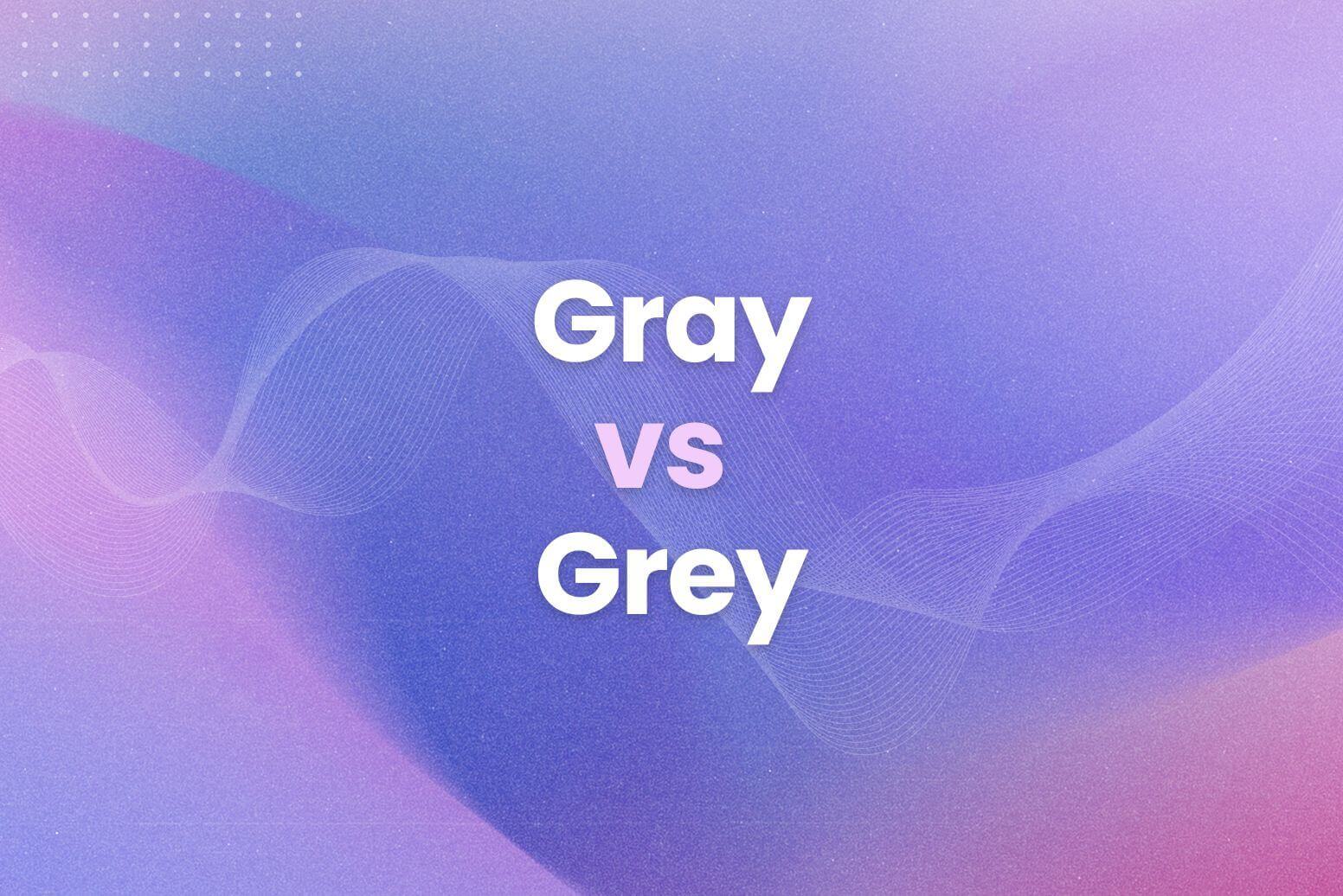Is it gray or grey? It’s a question that plagues writers, editors, and even casual texters. Consequently, this simple spelling difference can cause confusion. Moreover, it can even impact your credibility.
But don’t worry. This guide clears up the gray/grey area. In short, we’ll cover:
- The correct spelling of gray/grey.
- When to use gray vs. grey.
- The origins of both spellings.
- Regional differences in usage.
After that, you’ll know exactly which spelling to use.
The Correct Spelling of Gray/Grey
First, let’s address the elephant in the room: both gray and grey are correct. That is to say, there’s no single “right” answer. However, there are preferred usages depending on location. For example, in American English, gray is the more common spelling. On the other hand, grey is generally preferred in British English.
Secondly, this difference isn’t a recent development. In addition, it has roots in the evolution of the English language. Moreover, both spellings have been in use for centuries. Therefore, neither is technically a misspelling.
To clarify, think of it like color vs. colour. Similarly, gray is the American version, while grey is the British one. Consequently, if you’re writing for an American audience, gray is your best bet. On the contrary, if your audience is primarily British, stick with grey.
Furthermore, consistent use within a single piece of writing is key. That is to say, don’t switch back and forth between gray and grey within the same document. For instance, if you start with gray, continue using gray throughout. In short, consistency makes your writing look polished and professional.
Pro Tip: If you’re unsure which spelling to use, consider the context and your target audience. Moreover, using a grammar tool like Arvin can help you maintain consistency. For example, Arvin can be set to either American or British English, ensuring your spelling aligns with your chosen style. This way, you can focus on your writing, and Arvin takes care of the nitpicky details. This is especially helpful if you’re collaborating with writers from different regions.
When to Use Gray or Grey
Both spellings are correct, but context matters. Choosing the right one elevates your writing. In short, it’s about audience and established usage.
- Target Audience:
- Gray: Primarily American audiences.
- Grey: Primarily British (UK, Australia, etc.) audiences.
- Established Names/Phrases:
- Respect established spellings (e.g., Greyhound Lines).
- Scientific terms often use gray (e.g., gray matter).
- Consistency is Key:
- Choose one spelling and stick with it within a single document.
- Mixing spellings looks unprofessional.
- Contextual Examples:
- A novel set in London: Use grey.
- A technical manual for a US company: Use gray.
- Tools for Help:
- Arvin can be set to American or British English for automatic spelling checks.
- Arvin ensures consistency, especially for large projects or collaborations.
- Pro Tip: To avoid the issue entirely, rephrase. For example, instead of “The grey sky,” try “The overcast sky.”
In short, knowing your audience and maintaining consistency are the most important factors. Arvin can help you achieve both.
The Origins of Both Spellings
Both gray and grey trace their roots back to the Old English word grǣg. Because Old English wasn’t standardized, spelling variations were common. Consequently, these variations persisted as the language evolved, eventually leading to the two distinct spellings we use today.
Grey became more prevalent in British English, while gray became the dominant form in American English. This divergence was influenced by key figures and their dictionaries. For example, Samuel Johnson’s dictionary favored grey, while Noah Webster’s championed gray, partly to differentiate American English.
This difference isn’t just about spelling; it reflects historical and cultural identities. That is to say, it’s a linguistic snapshot of how language evolves and branches out.
Key takeaway? Both spellings are historically valid. The difference is primarily regional.
Regional Differences in Usage
The core difference between gray and grey boils down to location. In short, it’s a matter of regional preference.
- American English: Gray is the standard spelling. You’ll see it in most American publications, books, and websites.
- British English: Grey is the preferred spelling. This includes the UK, Australia, and other Commonwealth countries.
These preferences are deeply ingrained. They’re part of each region’s linguistic identity. Therefore, using the correct spelling shows attention to detail.
Moreover, certain proper nouns and established names maintain their original spelling, regardless of location. For instance, “Greyhound Bus Lines” keeps the British spelling even in America.
Pro Tip: Context is crucial. If you’re unsure, Arvin can help. Set Arvin to the appropriate English dialect for accurate spelling. This ensures your writing resonates with your target audience.
Mastering Gray or Grey Made Easy with Arvin
The gray (or grey) area is now clear. Understanding the regional differences and maintaining consistency is key. In short, choose the spelling that aligns with your target audience and stick with it.
Key takeaways on gray or grey
- Gray is the standard American English spelling.
- Grey is the standard British English spelling.
- Consistency within a single piece of writing is essential.
- Context and established names sometimes dictate usage.
Keeping track of these nuances can be tricky. But with Arvin, it doesn’t have to be. Arvin’s grammar check, powered by GPT-4, can be set to either American or British English. Therefore, you can ensure your spelling is always correct and consistent, no matter your audience. With Arvin by your side, you can focus on your message, not the spelling.
Frequently Asked Questions (FAQs)
Which is correct, gray or grey?
Both are correct. Gray is generally used in American English, while grey is used in British English. Therefore, it depends on your target audience.
Is it gray or grey hair?
Both are acceptable. However, gray hair is slightly more common in American English, while grey hair is more common in British English. Consequently, you can choose the spelling that aligns with your overall style and target audience.
Is it Crayola gray or grey?
It’s Crayola gray. The company uses the American spelling in its product name. Therefore, always use gray when referring to Crayola crayons.
Which color is grey?
Grey (or gray) is a color intermediate between black and white. In other words, it’s a neutral shade that lacks strong color saturation. Therefore, it’s often described as a muted or achromatic color.






